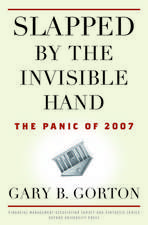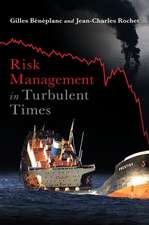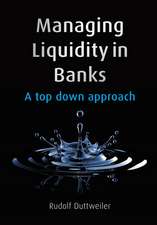Banking Risk Management in a Globalizing Economy
Autor Panos Angelopoulos, Panos Mourdoukoutasen Limba Engleză Hardback – 29 mar 2001 – vârsta până la 17 ani
Preț: 435.80 lei
Preț vechi: 603.09 lei
-28% Nou
Puncte Express: 654
Preț estimativ în valută:
83.39€ • 89.17$ • 69.53£
83.39€ • 89.17$ • 69.53£
Carte tipărită la comandă
Livrare economică 17 aprilie-01 mai
Preluare comenzi: 021 569.72.76
Specificații
ISBN-13: 9781567203400
ISBN-10: 156720340X
Pagini: 184
Dimensiuni: 156 x 235 x 19 mm
Greutate: 0.41 kg
Ediția:New.
Editura: Bloomsbury Publishing
Colecția Praeger
Locul publicării:New York, United States
ISBN-10: 156720340X
Pagini: 184
Dimensiuni: 156 x 235 x 19 mm
Greutate: 0.41 kg
Ediția:New.
Editura: Bloomsbury Publishing
Colecția Praeger
Locul publicării:New York, United States
Notă biografică
PANOS ANGELOPOULOS is a Credit Analyst at Alpha Bank and a consultant to the Ministry of Education on the development of courses in banking and stock markets, both in Greece. He also teaches in colleges and continuing education programs and holds an M.A. in economics from the City University of New York. Previously he worked in the Risk Management Department and the Credit Policy Department of Ionian Bank, also in Greece.PANOS MOURDOUKOUTAS is Professor of Economics, Long Island University, New York. He has traveled extensively throughout Europe and Asia as an adviser to government and business organizations, with extended stays at Nagoya University, Japan. Among his many publications are four books from Quorum: The Global Corporation and Collective Entrepreneurship in a Globalizing Economy (both 1999), and with (Yuko Arayama) The Rise and Fall of Abacus Banking in Japan and China (2000) and China Against Herself (1999).
Cuprins
Introduction:From Financial Intermediation to Risk ManagementBanking Risk Management:An OverviewEvolution of Banking Risk ManagementOff Balance Sheet Risk Management Methods:Financial DerivativesCredit Risk ManagementInterest Rate Tisk ManagementForeign Exchange Risk ManagementSummary and Conclusions











